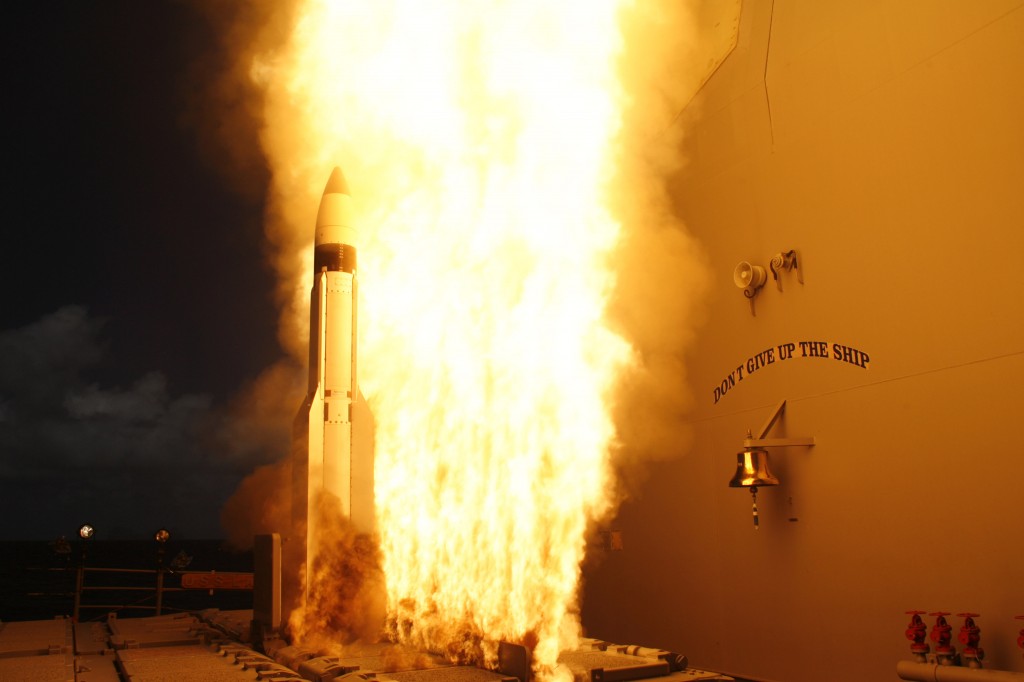Giving the Russians More Information on the SM-3 Interceptor? Just Say No.
Baker Spring / Michaela Dodge /

A Standard Missile-3 (SM-3) is launched from the Aegis-class guided missile cruiser USS Lake Erie (CG 70), during a joint Missile Defense Agency, U.S. Navy ballistic missile flight test.
According to an article in The Washington Times, the Obama Administration is trying to make yet another concession to the Russians over the U.S. missile defense program. This time, the Russians would be provided with the missile burnout velocity (VBO) of the U.S. SM-3 interceptor used on Aegis ships. This is a bad idea that has potentially significant limitations for the future of the U.S. missile defense system.
It is not clear in what form the United States would give this information to the Russians. The implications of even a carefully crafted statement could be severe, as the Russians would surely try to limit the speed of future U.S. interceptors. After all, the Russians’ “problem is not with the (U.S.) system as we have observed it so far, but what it might become,” said Russian Army Colonel General Viktor Yesin.
Imagine this situation: The speed of future U.S. interceptors exceeds the information provided now to the Russians. This would surely cause Moscow to argue that the interceptor threatens its strategic arsenal and that it had interpreted the U.S. information about the velocity of the SM-3 interceptor as the upper speed limit of any U.S. interceptor. In addition, Russia could demand an adjustment to the velocity of the Ground-Based Midcourse Defense interceptor.
Any upper speed limit or other limitations that would prevent the U.S. interceptor from shooting down Russian long-range missiles would negatively impact U.S. interceptors’ ability to shoot down any other long-range missiles. By extension, Russia seeks to keep the United States vulnerable to any long-range ballistic missile attack, be it from North Korea, Iran, China, or others. This is in line with Russia’s longstanding policy of creating a multipolar environment and actively working against U.S. interests all over the world. In the past, Russia’s Deputy Foreign Minister Sergei Ryabkov has stated that any increases to the qualitative and quantitative potential of the U.S. missile defense would prompt Moscow to reconsider its obligations under the New Strategic Arms Reduction Treaty—this Administration’s arms control crown jewel. The Administration, thus, has a vested interest in capping U.S. missile defense capabilities to protect the treaty.
Just recently, General Patrick O’Reilly, director of the Missile Defense Agency, invited the Russians to observe the SM-3 test using their own sensors. Similar invitations were rejected by Russian officials in the past. If the United States allows Moscow clear enough views of the test, the Russians might be able to figure out the VBO on their own.
There is no reason why the United States should limit its missile defenses or refrain from using its missile defenses against a ballistic missile en route toward its victims just because the launch location happens to be in Russia. It is clear, then, that a great deal of problems can be avoided by simply not providing this sensitive information to an unreliable actor with a bad record on sensitive technology and information proliferation. In addition, The Heritage Foundation’s research shows that the current SM-3 interceptors can already engage short-, intermediate-, and even long-range ballistic missiles with the proper cueing and command-and-control arrangements.
